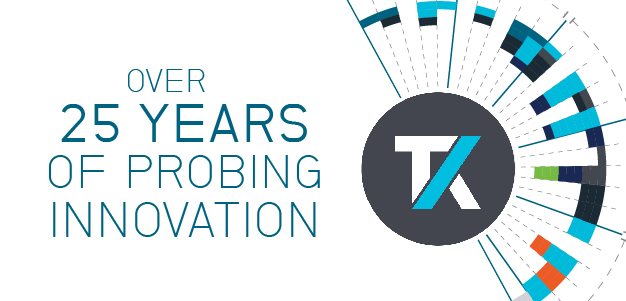


Precision measurements start with the probe tip. Matching the best probes with your oscilloscope of choice is crucial for achieving the greatest signal fidelity and measurement accuracy. Further, probes are also vital to measurement quality. Connecting a probe to a circuit can affect the operation of the circuit, and an oscilloscope can only display and measure the signal that the probe delivers to the oscilloscope input. Therefore, it is imperative that the probe has a minimum impact on the probed circuit and that it maintain adequate signal fidelity for the desired measurements.
Achieving a minimum probing impact is easier said than done however, especially because a variety of factors such as source impedance, capacitive loading and bandwidth can easily affect the device under test and the measurement. But for every problem, there is a solution, and that’s where this blog post comes in! Read on to learn about (or refresh your memory on) how to achieve optimum measurement results by minimizing the oscilloscope/probe affects on the signal source. (Need to know the fundamentals of source impedance, capacitive loading and bandwidth? Check out the link at the bottom for more info.)
Top tips for counteracting probing affects:
- Always match your oscilloscope and probes according to the oscilloscope manufacturer’s recommendations. For Tektronix probes and scopes, refer to the recommendations at www.tek.com/probes.
- Make sure that your oscilloscope/probe has adequate bandwidth or rise time capabilities for the signal you’re trying to measure. Typically, you should select an oscilloscope/probe combination with a rise time specification that’s three to five times faster than the fastest rise time you plan to measure.
- Always keep your probe ground leads as short and direct as possible. Too many ground loops can cause ringing.
- Select the probes that best match your application’s needs in terms of both measurement capabilities and mechanical attachment to test points.
It’s also important to always be aware of the possible probe loading effects on the circuit being probed. Typically, loading can be controlled or minimized through probe selection. Again, refer to www.tek.com/probes for the best recommendations.
Probe-loading considerations to keep in mind:
- Active probes: Active probes have minimal impact on the device under test given their high resistance and very low tip capacitance. The trade-off is that active probes typically have a low dynamic range. However, if your measurements fit within the range of an active probe, this can be the best choice in many cases.
- Passive probes: Tektronix has recently released a new class of passive probes with 1 GHz bandwidth and extremely low input capacitance - < 4pF! Using a probe with low input capacitance allows the user to attach longer ground leads without the same performance penalty.
- Voltage divider (Zo) probes: These probes have very low tip capacitance, but at the expense of relatively high resistive loading. They’re intended for use where impedance matching is required in 50 Ω environments.
Want to review even more probe information? Head over to Tektronix for the full primer, ABCs of Probes.
Since publishing the above blog, Tektronix is currently offering a free upgrade to 3/6 GHz spectrum analyzers and a free bundle of software applications on mixed-domain oscilloscopes. Check out the details here and save away!


